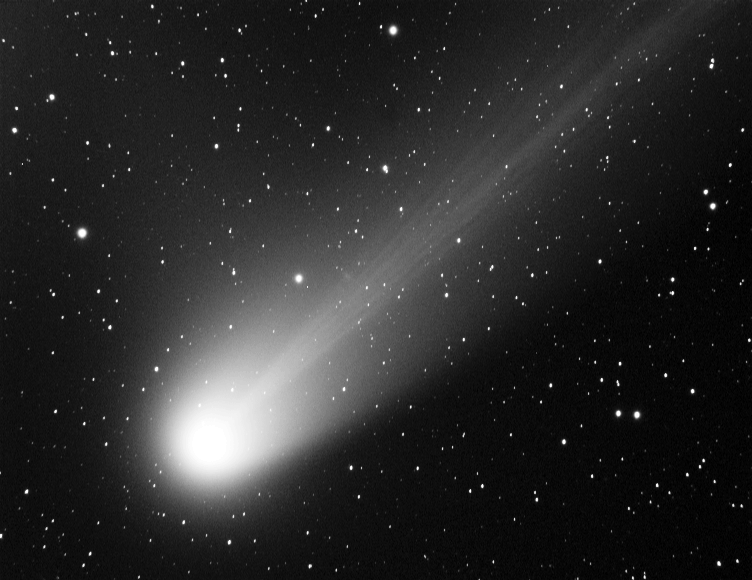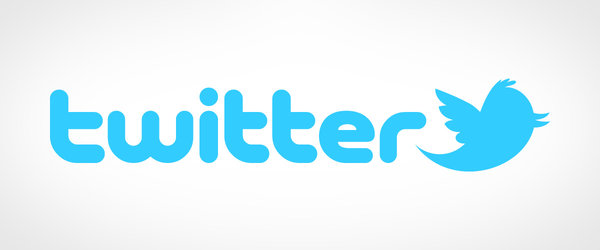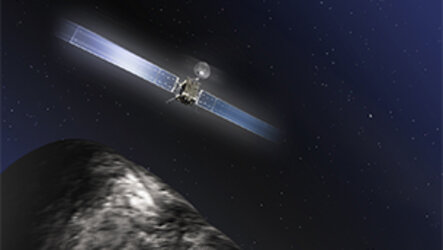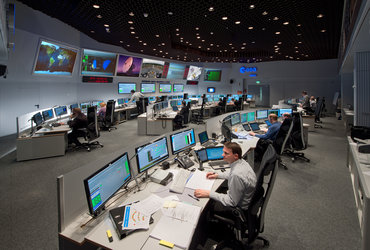Take part in ESA's Cool Comet Campaign
Do you use Twitter? Are you as intrigued by comets as we are? Then tell us 'Why comets are cool' and you might win a trip to ESA's operations centre in Germany on 15 June to celebrate 25 years of cometary science at ESA.
If you're fascinated by comets, you're not alone. For millennia, philosophers, poets, astronomers and kings have gazed up — sometimes in terror, always in awe — as comets streak across the heavens, appearing, it seemed, out of nowhere.
They've been called harbingers of doom and messengers of hope, but today, we know that comets are loose collections of ice, dust and small rocky particles, ranging from a few hundred metres to tens of kilometres across. They are immensely ancient, and bear witness to the formation of our Solar System.
Europe has been at the forefront of comet research for over a quarter century. In 1986, ESA's Giotto probe met up with comet Halley; its images found the first evidence of organic material in a comet.

ESA's next comet mission, Rosetta, is now on a ten-year journey to rendezvous with comet 67-P/Churyumov-Gerasimenko in 2014, when it will become the first spacecraft to undertake the long-term exploration of a comet at close quarters.
In June, at almost four times farther from Earth than the Sun, Rosetta will enter hibernation until January 2014, when it will wake for final approach to its target.
Cool Comet Campaign via Twitter
On 15 June, ESA will mark a quarter-century of comet science and say (temporarily) 'good night' to Rosetta with a special event at ESOC in Darmstadt, Germany. One talented Twitter user will be selected to join us as our guest at the event.
Between now and 9 June, you're invited to tell us, via Twitter, why comets are cool.

To take part, simply tweet your entry. It must include the "#coolcomet" hashtag, leaving you a mere 130 characters, so brevity is important.
Your tweet may also include a single URL, or weblink, that links to a 'non-text' submission, such as a picture, image, photo, animation, video, audio file or any other sort of digital content. Maybe you can sing a song about comets, and submit a link to a video of you singing in YouTube? (The judges will look unfavourably on any content that takes longer than 3 minutes to view).
We'll review all submissions and our expert judging panel will grade tweets for clarity, wit, humour, scientific accuracy and originality (and, yes, spelling counts).
We'll also publish all submissions in the Rosetta blog.
And remember...
Only one entry will be accepted from each participant; the campaign closes 9 June; the winner will be announced on 10 June.
Full campaign rules, regulations and other small print are available here — please read for full details before tweeting. Judges' decisions are final.
And keep an eye on the sky — you never know what fantastic things you’ll see!
More information
Read campaign rules & regulations here.
Questions? Send a tweet mentioning '@esaoperations' + your question.












